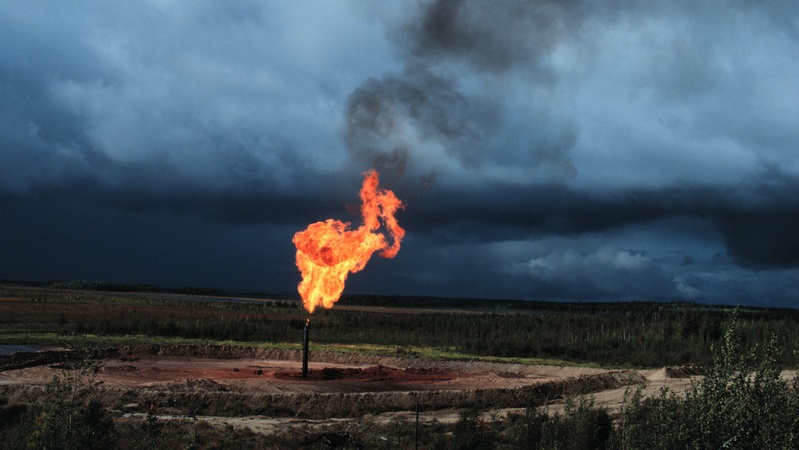As Europe watches the tragic and unjust war in Ukraine unfold, its heavy dependence on Russian fossil fuels, especially gas, has weakened economic sanctions. Meanwhile, the war’s impacts have reverberated around the globe, with record fuel and food prices threatening global social instability.
The crisis in Ukraine provides yet another compelling reason to end our dependency on fossil fuels and strengthen our ambition to prevent the fast-approaching, existential climate crisis. Many are already suffering from the devastating impacts global temperature rise above pre-industrial levels, especially in the global south, which contributes the least to global warming but is most susceptible to its impacts.
But as we accelerate the phase-out of fossil fuels, including gas, we must also accelerate efforts to cut methane emissions in order to slow warming in this decade. Methane, the prime component of gas, is a short-lived super climate pollutant that is 80 times more potent in trapping heat than carbon dioxide over a 20 year period. Methane is responsible for nearly half of the 1.1C of warming that is punishing us today, and it is increasing in the atmosphere even faster than carbon dioxide. Nearly a quarter of it comes from the fossil fuel sector, primarily from venting, flaring and leaks.
A recent paper published in the Proceedings of the National Academy of Sciences calculates that fast, near-term reductions in methane and the other short-lived climate super-pollutants can slow near-term warming four times more than cutting carbon dioxide alone. Indeed, it is the only known strategy that can slow warming in the near term.
Unless we take aggressive action now, there is a 50-50 chance we will blow past the 1.5C guard rail for warming above pre-industrial levels for at least one year by 2026, and a 10% chance the five-year mean will breach this critical guardrail, according to the World Meteorological Organization. If the atmospheric temperature exceeds 1.5C, we risk passing 11 irreversible tipping points and drifting towards a profoundly uninhabitable planet.
The good news is that efforts to cut methane are picking up. Last fall at Cop26, the United States and the European Commission launched the Global Methane Pledge, which now has the support of 120 countries, representing half of global methane emissions and nearly three-quarters of the global economy. Last month they launched the Pledge’s Energy Pathway to catalyze cuts in the oil and gas sector.
This global effort is being supported by the Global Methane Hub, launched in Glasgow to help countries that want to move fast on methane, with initial pledges of more than $220 million over three years from international philanthropies. The Hub provided $10 million to the Paris-based Climate and Clean Air Coalition (CCAC) to reduce short-lived climate pollutants to help 30 countries develop methane reduction plans. The Hub also is providing technical assistance and advocacy support for the Pledge.
Last month the G7 leaders reaffirmed their commitment to the Global Methane Pledge. But they also “stressed the important role” of expanded liquified natural gas (LNG) exports to Europe which are up 75% since March compared to 2021, with US LNG exports nearly tripling. This is of significant concern. While the EU acknowledges the climate risk involved in such a move, it explained that any public investment in LNG should be a “temporary response… without creating lock-in effects”.
On the margins of the G7, US president Joseph Biden and EU Commission president Ursula von der Leyen emphasised the need to cut methane even as “Russia’s energy coercion has put pressure on energy markets”. They agreed “to step up their cooperation to reduce methane emissions… while working to reduce venting and flaring in natural gas production, and methane leakage in the transmission and LNG supply chain.”
But the crisis in Ukraine challenges the reduction of gas use and the achievement of maximum methane mitigation. The EU’s scramble to replace its gas could slow both, but the better play is to recognize that mitigation will produce more gas for Europe. The US and Europe’s fact sheet about implementing the Global Methane Pledge notes that an amount of gas equivalent to a third of Russia’s annual production is leaked, vented or flared every year, and that nearly half could be captured at no net cost.
As world leaders strengthen sanctions, they must not defer efforts to tackle the climate emergency. That means accelerating the transition to clean energy so no country can be held hostage by Russia. It also means aggressively cutting methane and other super-pollutants as fast as possible in this decade, starting with a commitment to ensure that all replacement gas exported to Europe will have the lowest possible methane footprint.
This would increase gas supplies and slow near-term warming – and would do both faster than any other strategy. Moreover, it could be done at a very low cost, especially given today’s high gas prices.
Success here will help get us back on the path to peace and security and ease the otherwise unbearable burden we are putting on future generations.
Marcelo Mena is CEO of the Global Methane Hub. Durwood Zaelke is founder and president of the Institute for Governance & Sustainable Development.
